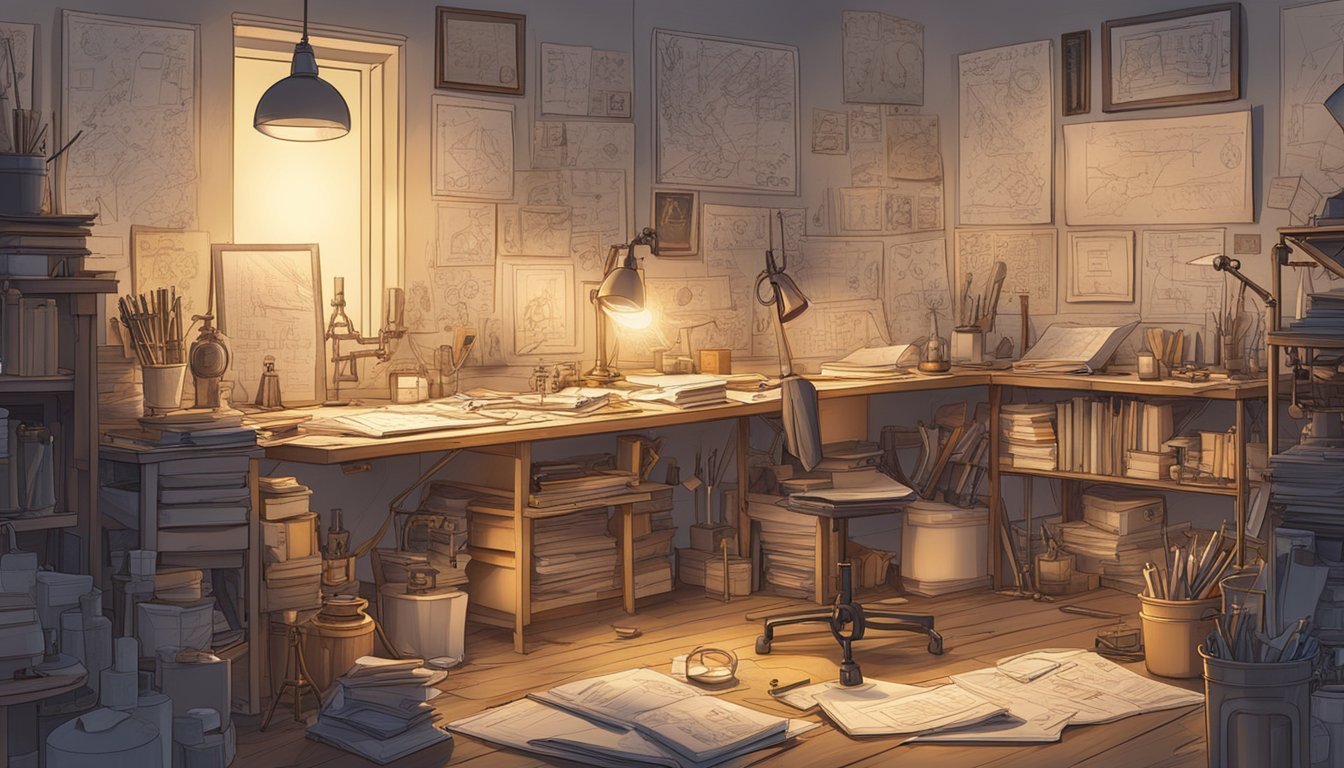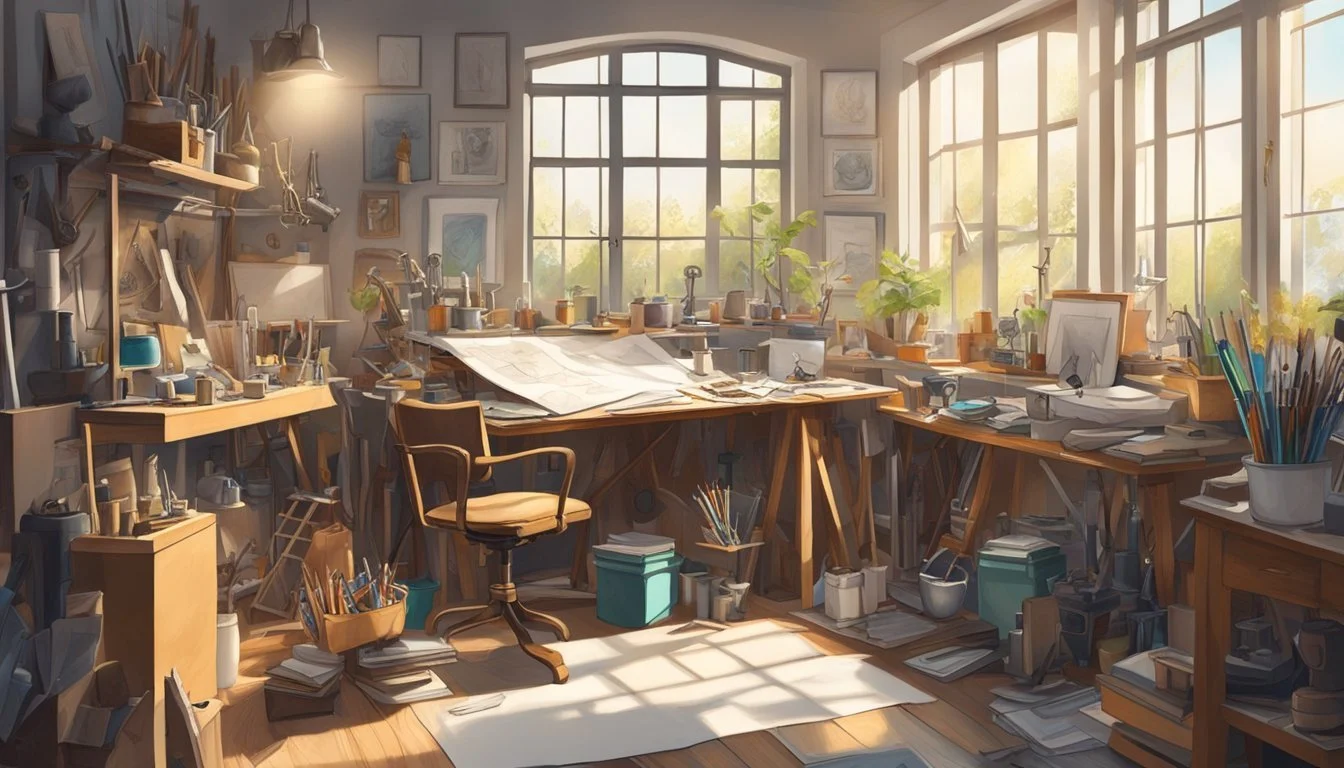6 Documentaries Examining the Life and Legacy of Leonardo da Vinci
A Comprehensive Look at the Renaissance Master
Leonardo da Vinci, the quintessential Renaissance polymath, continues to captivate audiences centuries after his death. His diverse talents as an artist, inventor, and scientist have inspired countless documentaries exploring his life and enduring legacy.
These films offer viewers a window into da Vinci's world, unraveling the mysteries behind his most famous works and shedding light on his innovative ideas. From his early years in Florence to his later life in France, documentaries about Leonardo da Vinci provide valuable insights into the mind of one of history's greatest geniuses.
1) Inside the Mind of Leonardo
This documentary offers a unique glimpse into Leonardo da Vinci's thoughts and creative process. Based on the artist's private journals, it features over 6,000 pages of handwritten notes and drawings.
Peter Capaldi, known for his role in Doctor Who, brings Leonardo's words to life through his narration. The film uses a hybrid approach, blending documentary elements with dramatic recreations.
Viewers are transported into Leonardo's world, exploring his ideas and inventions. The documentary showcases his wide-ranging interests, from art and science to engineering.
3D technology enhances the viewing experience, allowing audiences to feel immersed in Leonardo's sketches and designs. This innovative approach helps visualize the artist's concepts in a new way.
By focusing on Leonardo's personal writings, the film provides insight into his mindset and working methods. It reveals the thought processes behind some of his most famous works and lesser-known projects.
2) Leonardo da Vinci: The Universal Man
This documentary delves into the extraordinary life and legacy of Leonardo da Vinci, the quintessential Renaissance polymath. Released in 2019, the film explores da Vinci's numerous contributions to art, science, and engineering.
Historian Serge Bramly leads viewers on a journey through time, investigating the enigmatic genius's life and work. The documentary features interviews with experts who provide insights into da Vinci's groundbreaking ideas and creations.
Viewers are treated to a visual feast of da Vinci's masterpieces, from his early sketches to his most famous paintings. The film also examines his mysterious notebooks, offering a glimpse into the mind of this visionary thinker.
"The Universal Man" showcases da Vinci's wide-ranging interests and talents, highlighting his inventions and scientific observations. It demonstrates how his innovative ideas continue to influence modern fields of study.
This documentary provides a comprehensive look at da Vinci's life, from his humble beginnings to his rise as one of history's most celebrated figures. It offers a fresh perspective on the enduring impact of his work, 500 years after his death.
3) The Secret Life of Leonardo da Vinci
Leonardo da Vinci's private life remains shrouded in mystery, fueling speculation and intrigue among historians and art enthusiasts. Documentary filmmakers have attempted to uncover hidden aspects of the Renaissance polymath's personal world.
Some documentaries explore da Vinci's rumored homosexuality and his relationships with apprentices and patrons. These films examine historical records and analyze his artwork for potential clues about his sexuality.
Da Vinci's notebooks provide insights into his daily life and thoughts. Documentaries often focus on decoding his mirror writing and interpreting his sketches to reveal his innovative ideas and observations.
The artist's unconventional beliefs and potential involvement in secret societies have also been subjects of documentary investigation. Filmmakers examine theories about da Vinci's alleged heretical views and possible coded messages in his paintings.
Documentaries delve into da Vinci's scientific pursuits, exploring his anatomical studies and technological inventions. These films highlight how his private experiments and observations contributed to his artistic and engineering achievements.
4) Da Vinci's World: A Journey Through Time
This documentary transports viewers to the vibrant world of Renaissance Italy during Leonardo da Vinci's lifetime. It explores the cultural, political, and intellectual landscape that shaped the genius polymath.
The film recreates 15th century Florence, Milan, and Rome, showcasing the bustling workshops, grand palaces, and innovative engineering of the era. Through expert interviews and historical reenactments, it illustrates how da Vinci navigated this dynamic environment.
Viewers gain insight into the skepticism and free-thinking that characterized the Renaissance. The documentary examines how this climate of intellectual curiosity fueled da Vinci's insatiable appetite for knowledge and experimentation.
It also delves into the regional conflicts and religious upheavals of the time. The film demonstrates how these events influenced da Vinci's work and career trajectory as he moved between different Italian city-states.
By contextualizing da Vinci's life within his historical moment, this documentary offers a rich understanding of the factors that contributed to his extraordinary achievements in art, science, and engineering.
5) Decoding da Vinci's Codex
Leonardo da Vinci's notebooks, known as the Codex, contain a wealth of scientific observations and inventions. These documents provide insight into his innovative mind and forward-thinking ideas.
The Codex includes detailed drawings and notes on subjects ranging from anatomy to engineering. Scholars have spent decades studying these pages to unravel da Vinci's thought processes and discoveries.
One notable aspect of the Codex is da Vinci's mirror writing, which he used to protect his ideas. This unique writing style has intrigued researchers and added an extra layer of complexity to decoding his work.
Many of da Vinci's concepts were centuries ahead of their time. His sketches include designs for flying machines, hydraulic pumps, and even an early version of a tank.
Decoding the Codex has revealed da Vinci's meticulous approach to observation and experimentation. His detailed anatomical drawings, for instance, demonstrate a level of accuracy that was unparalleled for his era.
The Codex also showcases da Vinci's artistic process, with sketches and studies for his famous paintings. These preliminary works offer valuable insights into his creative methods and techniques.
6) Leonardo: The Man Who Knew Everything
"Leonardo: The Man Who Wanted to Know Everything" is a documentary that explores the multifaceted genius of Leonardo da Vinci. The film delves into his diverse talents and interests beyond his renowned artistic works.
It showcases Leonardo's contributions to fields such as anatomy, architecture, agriculture, music, and mechanics. The documentary highlights his insatiable curiosity and desire to understand the world around him.
Born out of wedlock, Leonardo faced certain limitations in his formal education. Despite this, he pursued knowledge relentlessly throughout his life. The film examines how he overcame these early obstacles to become a Renaissance polymath.
Leonardo's iconic works like the Mona Lisa and The Last Supper are discussed, but the documentary also focuses on his lesser-known scientific and technological pursuits. It explores his fascination with human anatomy, his innovative designs for flying machines, and his groundbreaking studies in various scientific disciplines.
The film presents Leonardo as a visionary who was far ahead of his time. It illustrates how his ideas and inventions continue to influence modern science and technology, cementing his legacy as one of history's greatest minds.
Leonardo da Vinci's Renaissance Context
Leonardo da Vinci emerged as a remarkable figure during the Italian Renaissance, a period of cultural rebirth and intellectual awakening. His multifaceted talents and innovative ideas were shaped by the unique environment of 15th-century Italy.
Cultural Background
The Renaissance era fostered a renewed interest in classical learning and humanism. This intellectual climate encouraged curiosity and exploration across various disciplines. Florence, Leonardo's early home, was a hub of artistic and scientific innovation.
Artists and thinkers enjoyed patronage from wealthy families like the Medici. This support allowed for experimentation and the pursuit of knowledge. The period saw advancements in anatomy, perspective, and naturalistic representation in art.
Leonardo's contemporaries included other brilliant minds such as Michelangelo and Raphael. This competitive atmosphere pushed artists to new heights of creativity and skill.
Influences on His Work
Leonardo's diverse interests were nurtured by the Renaissance emphasis on universal knowledge. He studied anatomy, engineering, and natural phenomena alongside his artistic pursuits. This interdisciplinary approach informed his innovative techniques in painting and sculpture.
The workshops of Florence exposed Leonardo to various crafts and technologies. He learned from masters like Andrea del Verrocchio, absorbing traditional techniques while developing his unique style.
Leonardo's notebooks reveal his fascination with nature's designs. This curiosity aligned with the Renaissance ideal of understanding the world through observation and reason. His studies of light, shadow, and human proportions revolutionized artistic representation.
Artistic Innovations and Techniques
Leonardo da Vinci revolutionized artistic practices through groundbreaking techniques and masterful creations. His innovative approaches to painting and drawing continue to captivate audiences and inspire artists centuries later.
Pioneering Techniques
Leonardo developed sfumato, a technique that softens outlines and blends colors to create a hazy, atmospheric effect. This method adds depth and realism to paintings, as seen in the Mona Lisa's enigmatic smile. He also perfected chiaroscuro, using strong contrasts between light and dark to model three-dimensional forms.
Leonardo's notebooks reveal his meticulous approach to anatomy studies. He dissected human bodies to understand muscle structure and movement, enabling him to create more lifelike figures in his art.
His experimental use of oil paints allowed for richer colors and smoother blending. Leonardo layered thin glazes of paint to achieve luminous skin tones and subtle shadows in his portraits.
Key Artworks
The Last Supper showcases Leonardo's mastery of perspective and composition. He used linear perspective to create depth, drawing the viewer's eye to the central figure of Christ. The dramatic expressions and gestures of the apostles demonstrate his keen observation of human behavior.
The Mona Lisa exemplifies Leonardo's sfumato technique. The subject's mysterious smile and lifelike gaze have fascinated viewers for centuries. The painting's innovative three-quarter pose broke from traditional portrait conventions of the time.
Leonardo's unfinished work, The Virgin of the Rocks, displays his skill in creating atmospheric landscapes. The painting's rocky background and misty lighting showcase his ability to render natural elements with scientific accuracy.



